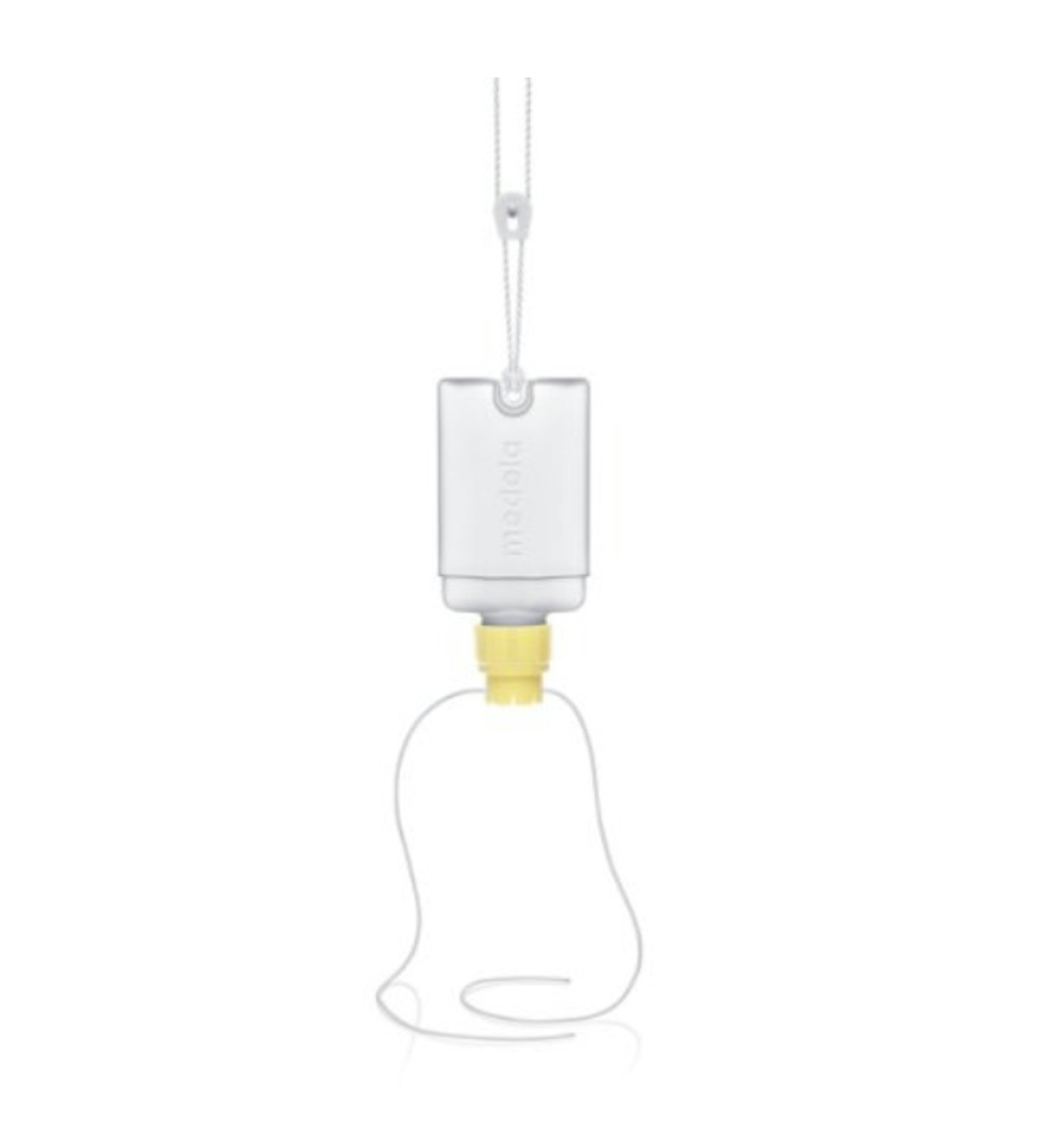For many mothers, the dream of being able to breastfeed their baby can come crashing down shortly after giving birth for many reasons, and SNS feeding(supplemental nursing system feeding) may just be the answer to their prayers.
While a mother’s right to choose what she feels is right for her and her baby may mean that the answer is simply formula feeding their child—a perfectly good option, there are others who prefer to breastfeed and would like to try anything and everything to make it happen.
While SNS feeding may seem like a last resort, more and more mothers are turning to it upon the first sign of difficulty—and rightly so; it’s extremely effective and can help both mother and baby reach their goal. What exactly is SNS feeding and how can it help parents who would like to reap the benefits of breastfeeding? Here’s everything you need to know about SNS feeding.
What is SNS feeding?

SNS feeding is a lactation aid that employs the use of a thin and flexible capillary tube, made from medical grade silicone, to provide the baby with supplemental milk.
Although it might look and sound a little technical and perhaps somewhat scary (feeding tubes? Yikes!), it’s nothing to be worried about, and you’ll be surprised at just how simple and effective it is. One end of the feeding tube is attached to the breast by simply using a piece of medical tape and the other end is placed in a bottle containing milk—either expressed breast milk, donor milk or baby formula. The mother then proceeds to breastfeed the baby by placing the nipple along with the attached tube into the baby’s mouth. Once the baby latches and starts to suckle, milk will be drawn from the bottle in addition to milk from the breast, if available.
Why SNS feed a baby?

No matter how hard they try, some women are unable to breastfeed due to a lack of milk production, low milk supply, flat or inverted nipples, or a poor latch. Low milk supply is a catch 22 because in order to get milk production going, the baby has to put in a little hard work, but if no milk is coming out, the baby can get frustrated and refuse to latch. You could end up going round in circles. An SNS feeding tube will reward the baby’s sucking with milk hence promoting an increase in your own milk production. In SNS feeding, we “use it to lose it” meaning that once the baby has managed to help you get your milk production up, there won’t be any need for SNS anymore, and you can breastfeed the baby as normal.
This isn’t always the case, however, and some women may use an SNS feeding system till the baby is fully weaned, for example, mothers who cannot produce milk due to hormonal or other medical issues, and even adoptive mothers or those who have had their baby via a surrogate.
Benefits of SNS feeding
SNS is a way to breastfeed your child while supplementing their nutrition. However much you manage to produce, some babies just need more. As mentioned earlier, SNS feeding is a great way to increase milk production, but even if you don’t succeed in building up a sufficient milk supply, you can still reap the other benefits of breastfeeding such as skin to skin, bonding with the baby, and oxytocin release.
DIY SNS breastfeeding system
Hiring a lactation consultant to help get you started with SNS is certainly recommended, as they can help you with both the physical, practical and mental aspects. Once you get the hang of it, there’s nothing to it, but don’t be disheartened if it takes a few tries to finally be able to master SNS feeding. As with everything, practice makes perfect. Here are the exact steps to take in order to SNS feed your baby:
What you’ll need:
The supplies you’ll need are available at most pharmacies or medical supply shops.
-
No. 5 French medical-grade silicone feeding tube
-
Syringe
-
Medical tape
-
Baby bottles
-
Formula or breast milk
-
Alternatively, you can purchase the whole supplemental nursing system from Medela (£61.20).
Method:
-
Sterilise all the equipment.
-
Line up one end of the feeding tube to the breast so that it is level with the edge of the nipple.
-
Affix the tube to the breast using a couple of pieces of medical tape.
-
Put the other end of the SNS feeding tube in a bottle or container of milk. For the first few times, till the baby gets the hang of suckling, you can attach the end of the tube to a syringe containing milk and slowly push the milk through the tube via the syringe. Once the baby’s sucking game is strong, they’ll be able to draw the milk via the tube directly from the bottle or container.
SNS feeding: how-to video
Here is a helpful step-by-step video on how to get the hang of SNS feeding:
SNS by Medela

[amazon-product id=B000W73YKY type=ASIN]
Although you can certainly DIY it, the Medela SNS feeding kit has everything you need to get started, including a bottle with adjustable flow rate that you can hang around your neck for ease of use and an adjustable strap, and colour-coded feeding tubes.
“Could not recommend this enough,” wrote one mother. “If you’re struggling but want to have that connection and stimulation (to make milk) then this product is great!” Another explained, “When my baby girl was three weeks old and had a growth spurt, I had a low milk supply and was about quit breastfeeding. Thanks to SNS, I was able to get to exclusive breastfeeding in a month.”
Have 60 seconds to spare? Why not join thousands of mums-to-be and start your very own Amazon baby wish list! They're absolutely free to create and perfect to send to the friends, aunties and your mum to make sure you're getting the baby products you really need!
